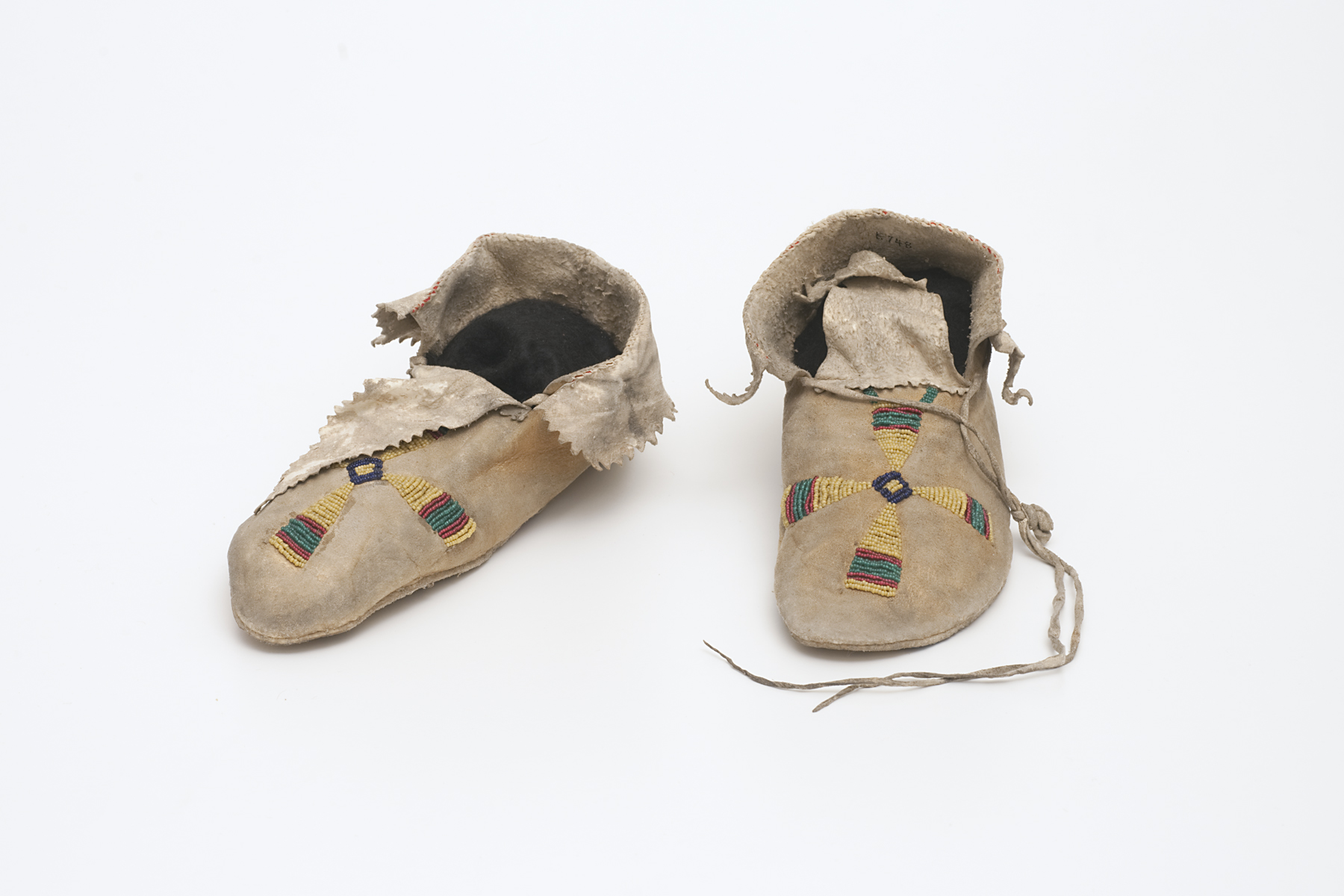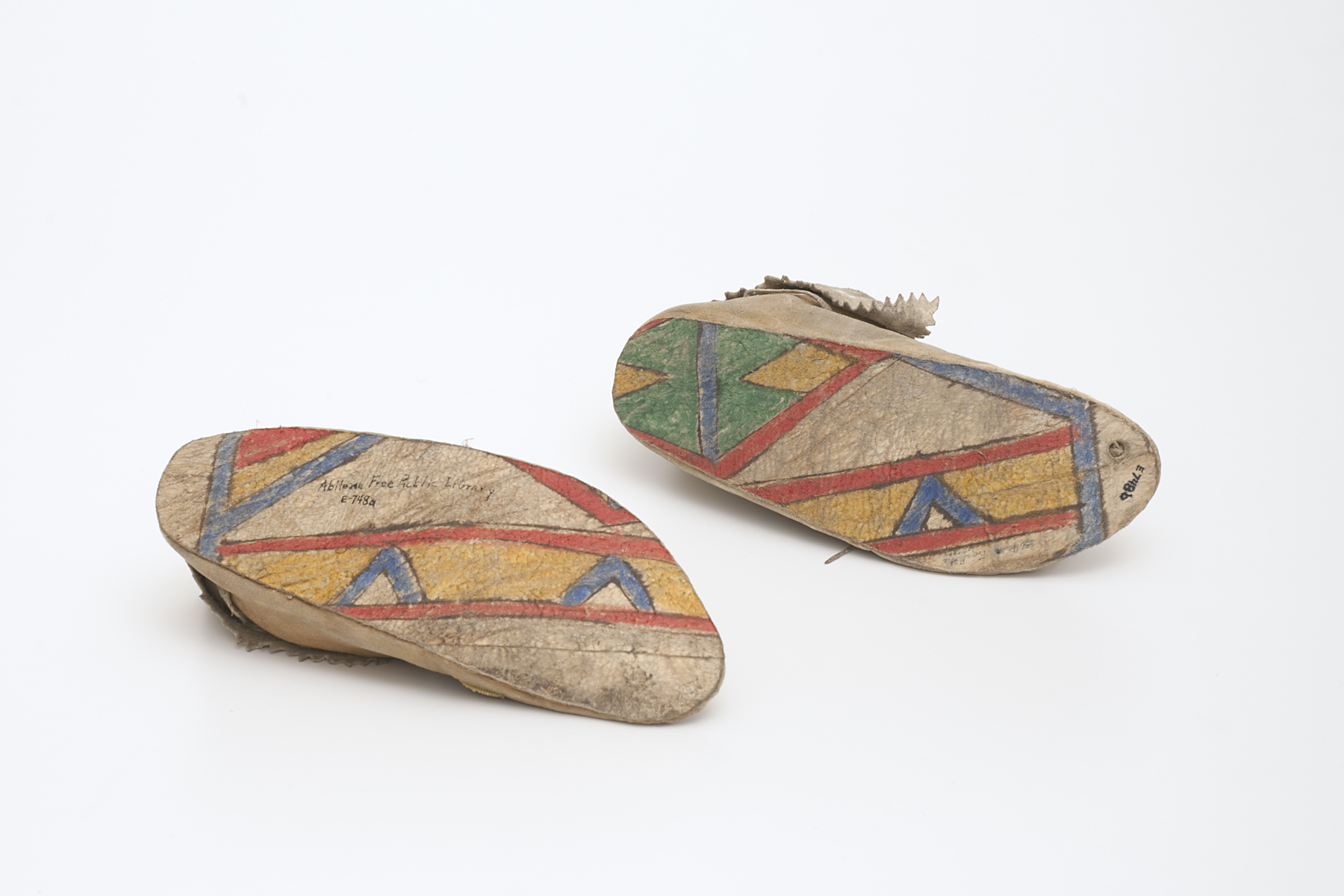pair of beaded moccasins, unrecorded Hinono’eino or Sioux artist
Artwork Overview
pair of beaded moccasins,
late 1800s
Where object was made: United States
Material/technique: buckskin; rawhide; paint; beading
Dimensions:
Object Height/Width/Length (Height x Width x Length): a 10 x 12 x 25.5 cm
Object Height/Width/Length (Height x Width x Length): 3 15/16 x 4 3/4 x 10 1/16 in
Object Height/Width/Length (Height x Width x Length): b 11 x 13 x 25 cm
Object Height/Width/Length (Height x Width x Length): 4 5/16 x 5 1/8 x 9 13/16 in
Object Height/Width/Length (Height x Width x Length): a 10 x 12 x 25.5 cm
Object Height/Width/Length (Height x Width x Length): 3 15/16 x 4 3/4 x 10 1/16 in
Object Height/Width/Length (Height x Width x Length): b 11 x 13 x 25 cm
Object Height/Width/Length (Height x Width x Length): 4 5/16 x 5 1/8 x 9 13/16 in
Credit line: Gift from the Harold Eicholtz Collection
Accession number: 2007.3742.a,b
Not on display
If you wish to reproduce this image, please submit an image request






